Introduction
Wildlife monitoring in ecologically rich but challenging environments, requires tools that perform reliably in varied landscapes. I evaluated the FLIR ONE thermal camera's effectiveness in locating wild animals under real-world conditions, its performance during dawn and dusk in a time of favorable thermal contrast, to understand their possibilities and its limitations.
Overview of the FLIR ONE EDGE PRO
The FLIR ONE thermal camera is an attachment for smartphones and tablets, offering portability and accessibility. Key features include:
- Thermal Resolution: 160 × 120 pixels.
- HFOV/VFOV: 54° / 42°
- MSX® Image Enhancement: Combines thermal imaging with visible light for improved detail. To locate nocturnal wildlife, this feature can’t be used.
- Temperature Range: Detects temperatures between -10 °C to 50 °C with a precision of ±3 °C
- Compatibility: Connects via Wifi & Bluetooth to iOS® y Android™ devices. Also has a USB-C port.
Initial tests
Thermal cameras are very dependent of the environment, to locate thermal signatures of wildlife, it is required to have a high contrast with the environment, so winter conditions are the bests to use the cameras.
Since the purpose of the project is the location of wildcats to promote their conservation, I started testing the ability of the camera to identify feral cats, since they could have a similar thermal signature.
To have best results I performed the test in winter. Once I located a feral cat, I observed that the camera can’t identify the feral cat as the hottest point of the image until I was relatively near, around 10 - 12 meters of distance. This makes it very difficult to locate individuals at large distances on a large scale.
In the test video you can see that the feral cat is only detected as the hottest point of the image, when the distance of the cat is around 10 meters.
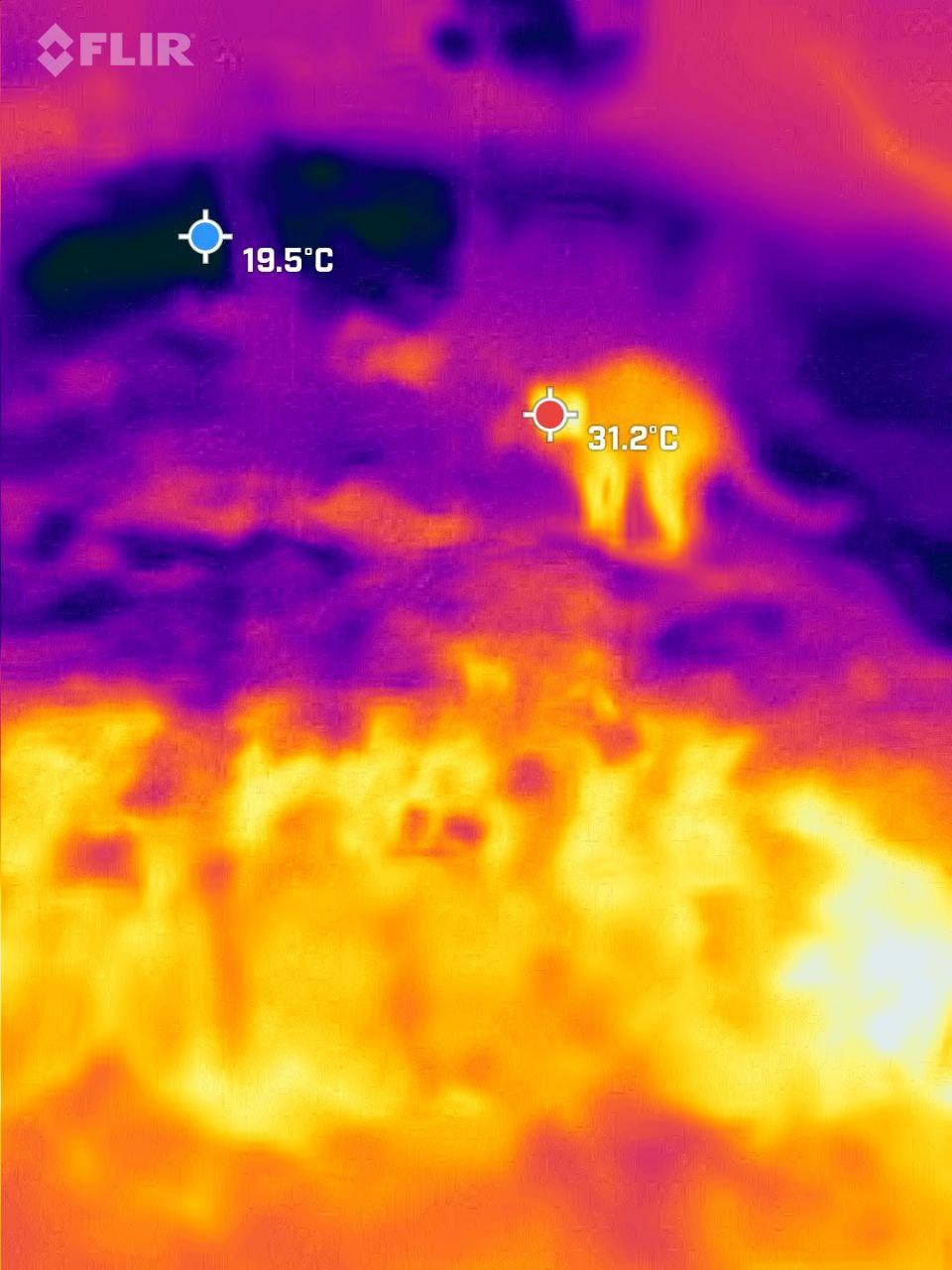
In this test image taken in summer, even the cat is detected as the hottest point of the image, is much more difficult to detect and longer distances due to the lack of thermal contrast with the high temperatures of the soil.
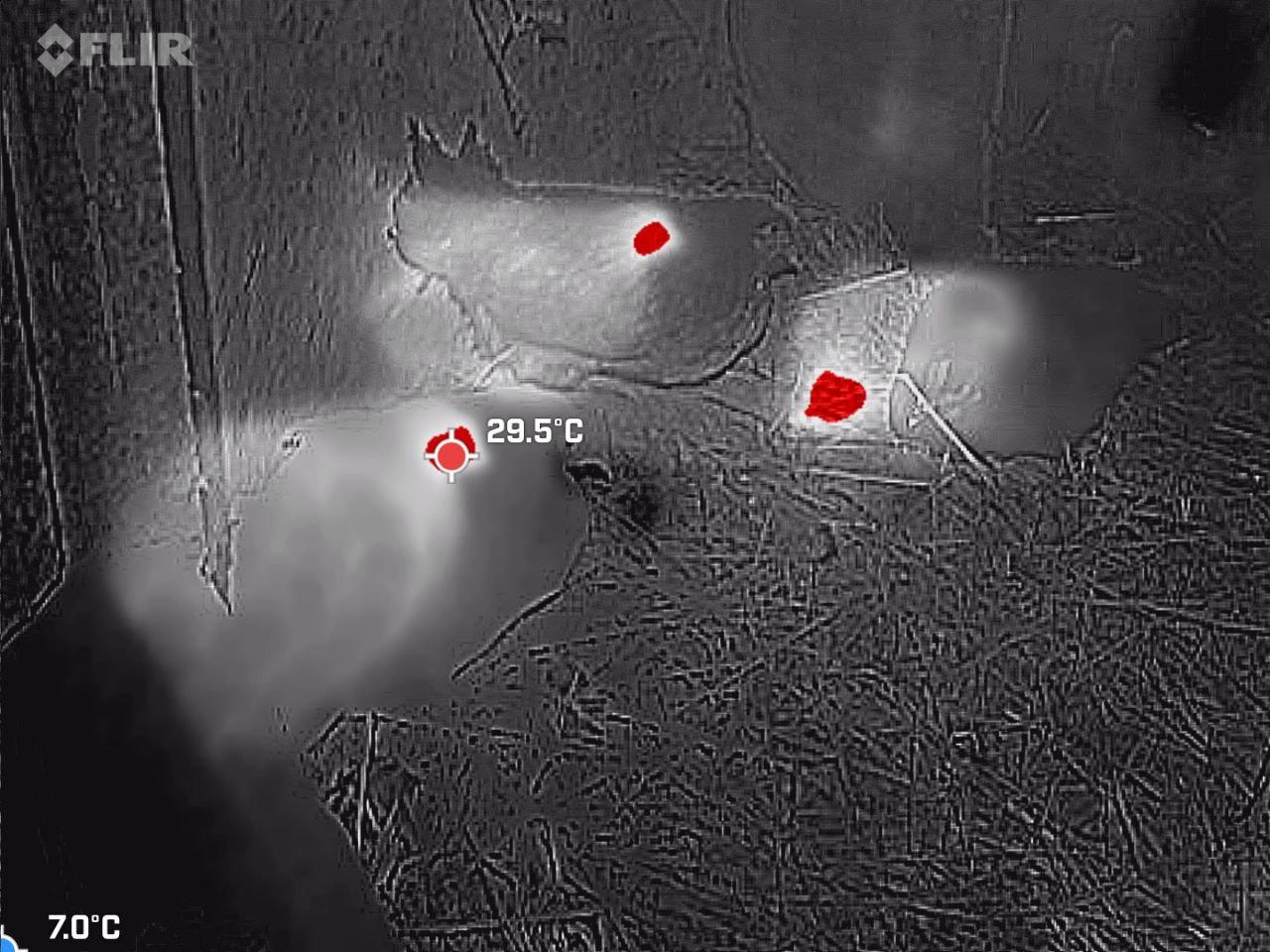
Here is another thermal image as a test of three chickens to understand the detection range.
Two more test images with different color palette, with the detection of a squirrel as the hottest point of the image with the camera relatively near. This test was performed on summer conditions:
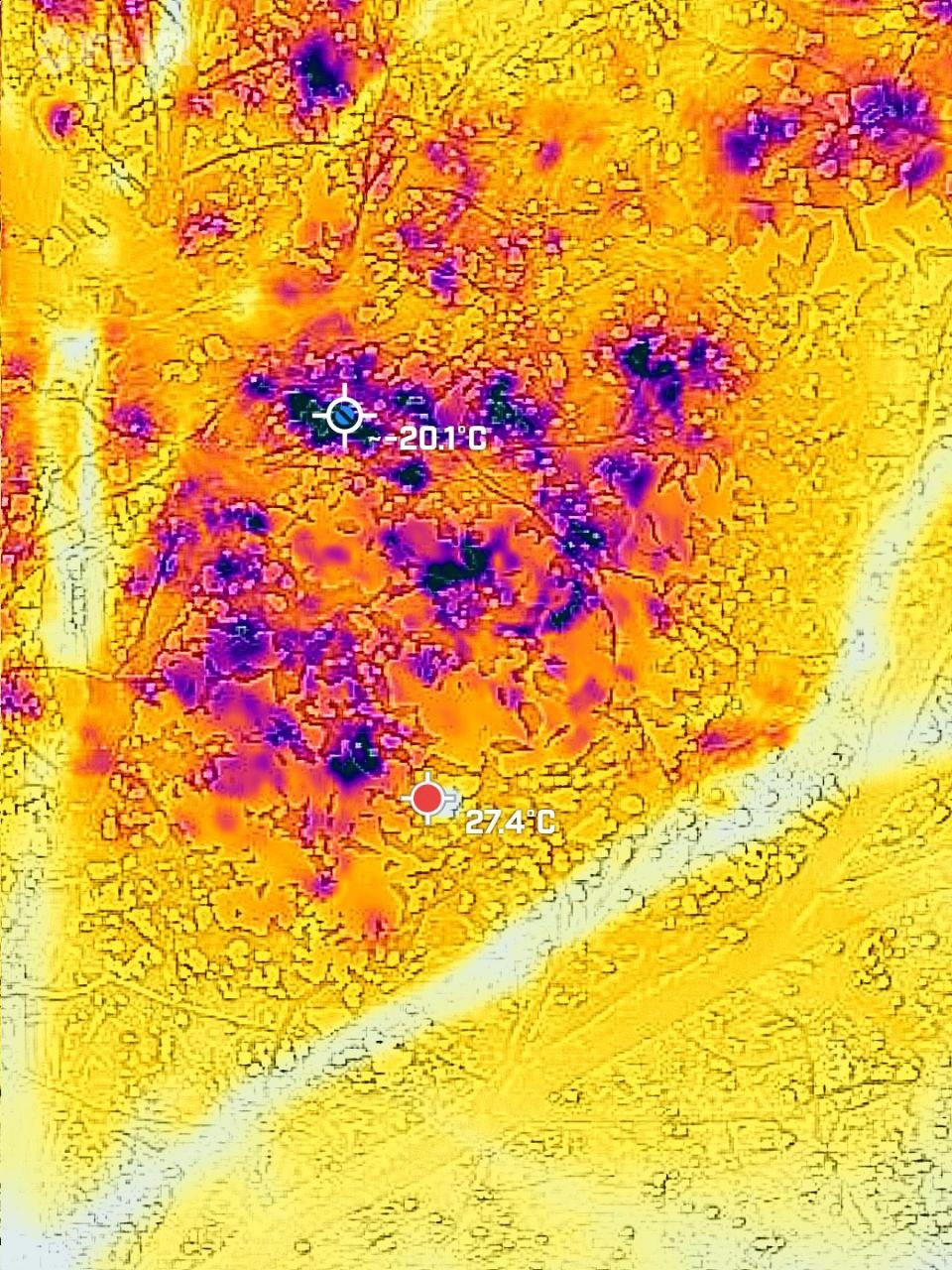 | 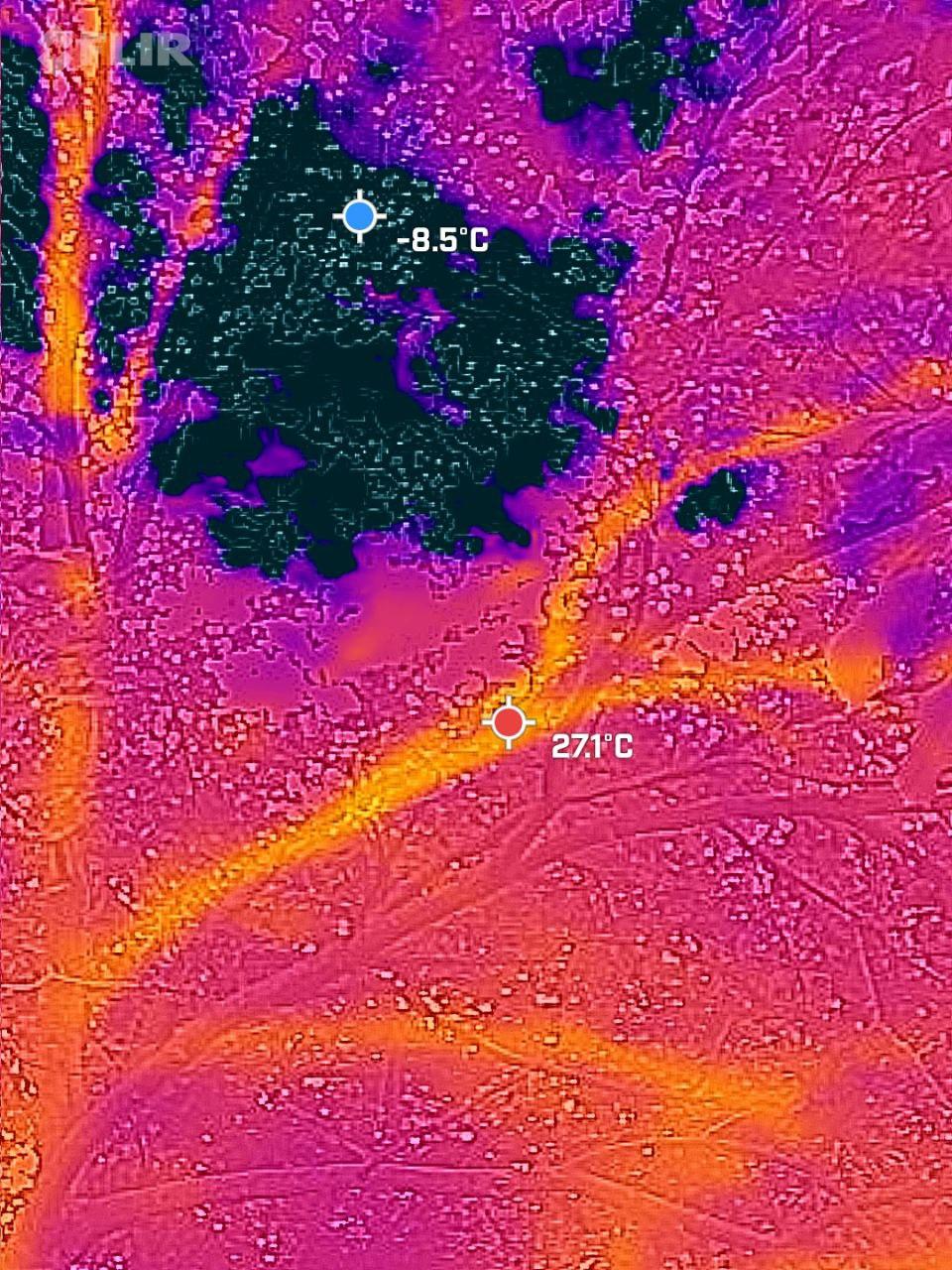 |
Field Testing
The tests were conducted near "Acequia Baja de Pitres", a strategic area within the Sierra Nevada National Park, chosen for its diverse ecological features:
- Hydrological Features: A constant water supply attracts various wildlife species.
- Mixed Landscape: Including an open areas for the wildcat for hunting and pine forests, for hiding.
- Wildlife Presence: Frequent activity of mountain goat, wild boars, and footprints of small mammals was observed.
Environmental conditions:
- Date of testing: November 2024.
- Lunar phase: Full moon, providing natural ambient light.
- Time of tests: Dusk: 6:00 PM to 8:00 PM.
- Thermal contrast: cooler ambient temperatures, provided favorable conditions for distinguishing thermal signatures of animals in contrast with the terrain.
Setup:
- Smartphone Used: Vivo X90 Pro smartphone running Android 15, connected to the FLIR ONE thermal camera.
Two different setups tested:
- Walking in mountain path with the camera in the hand.
- Camera mounted in tripod + monitoring station.
Walking with the camera while focusing on the screen is difficult and potentially unsafe, particularly in uneven terrain or forested areas. It was very difficult to walk at night in a mountain path looking the light of the screen of the smartphone. Even with minimum screen light, it was complicated to see the path and screen at same time, since eyes needs time to adapt to different light conditions. Another approach is preferred, alternating static monitoring and walking that is much more practical.
Unfortunately, with the tested smartphone, the FLIR ONE app was crashing after five minutes recording, so was not possible to leave the smartphone unattended, and I needed to restart the app approximately every five minutes.
For this static setup, to make the monitoring more comfortable, I placed the camera in a tripod in a strategic position, and placed a small tent on the side with a maximum distance of two meters, where I was inside with the smartphone monitoring and recording the output of the camera.
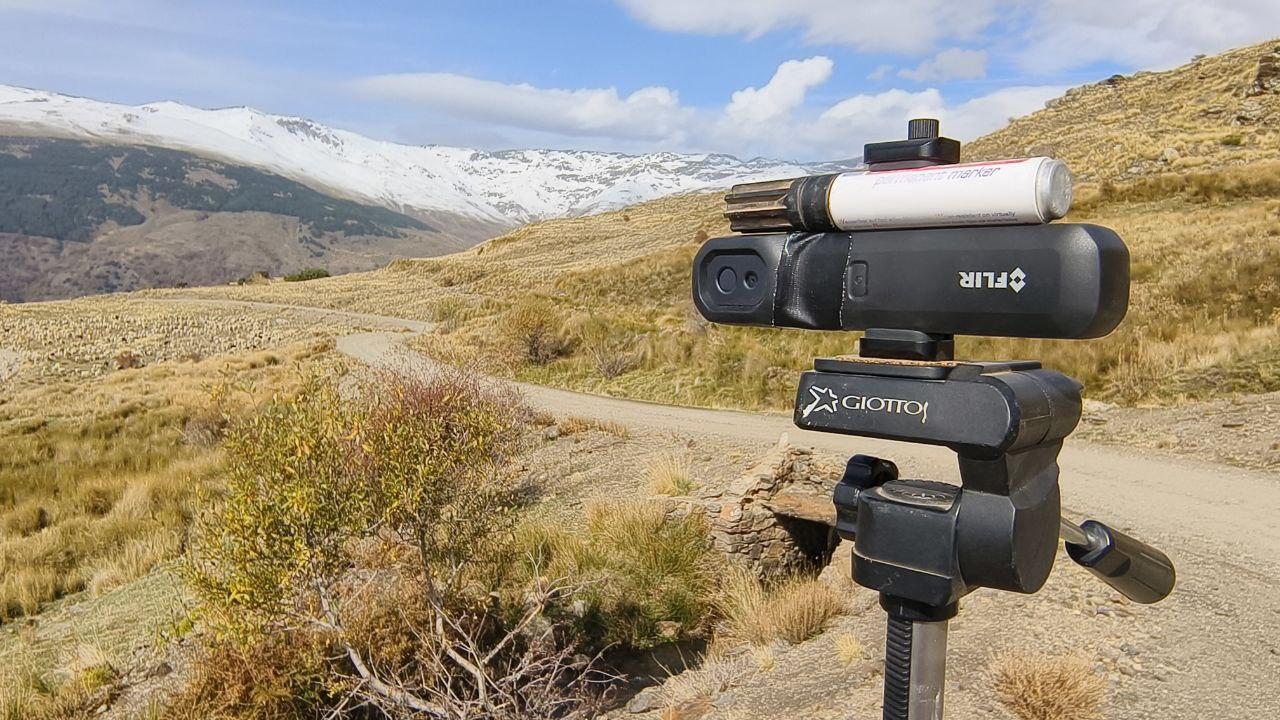
Since the Camera don't have a tripod mount, I improvised a mount with a smartphone holder. The camera and tripod should be as camouflaged as possible.
Optimal camera settings for wildlife detection
Even if the setup of the camera is very simple, and don’t have too much to change, some configuration is recommended to help in the detection of wildlife:
- Color Palette: Hot Spot was selected to highlight the point with the highest temperatures in red. This setting emphasizes areas of interest, such as animal bodies, facilitating the location against the cooler background.
- Emissivity was setup as default.
- Smartphone screen brightness: Viewing a bright smartphone screen in low-light conditions is difficult and may disrupt night vision. To address this, it is recommended to lower the screen brightness to its minimum setting.
- To prevent the detection of the camera by wild animals at night, place a tape in the frontal leds is recommended.
Suggested techniques
Tripod Use:
Mounting the FLIR ONE camera on a tripod enhances stability and allows for prolonged monitoring of specific areas without requiring continuous hand movement.
Panoramas:
For quick scans of open areas, performing panoramas as an efficient technique for large scale.
Multi stationary observation: Moving between areas with a stationary tripod setup and short panoramas balances stability and coverage during field surveys to maximize the area covered.
Monitoring modes
Monitoring with thermal cameras allows for two primary approaches to wildlife detection, each with its advantages:
Unsupervised Monitoring (Video Recording):
The camera records thermal video autonomously for later analysis.
This method is effective for extended monitoring sessions without requiring constant attention, particularly placed in a tripod to ensure stability and consistent framing.
Supervised Monitoring (Live Observation):
A person actively observes the live thermal feed on a smartphone screen while scanning the environment.
This approach enables immediate identification and tracking of wildlife but requires in-situ effort and attention from the observer.
Results and conclusions
Both monitoring methods—unsupervised video recording and supervised live observation— were tested without successful detection of wildlife, this could be due to difference reasons:
- Absence of wildlife during the time of the experiment.
- Short range of detection of the camera.
Detection of my presence by wildlife, avoiding approach.
My conclusion is that this camera has limitations in detecting small mammals on a large scale or large distances, but could be useful for detection of big animals at large distances or small animals at close distance.







Add the first post in this thread.